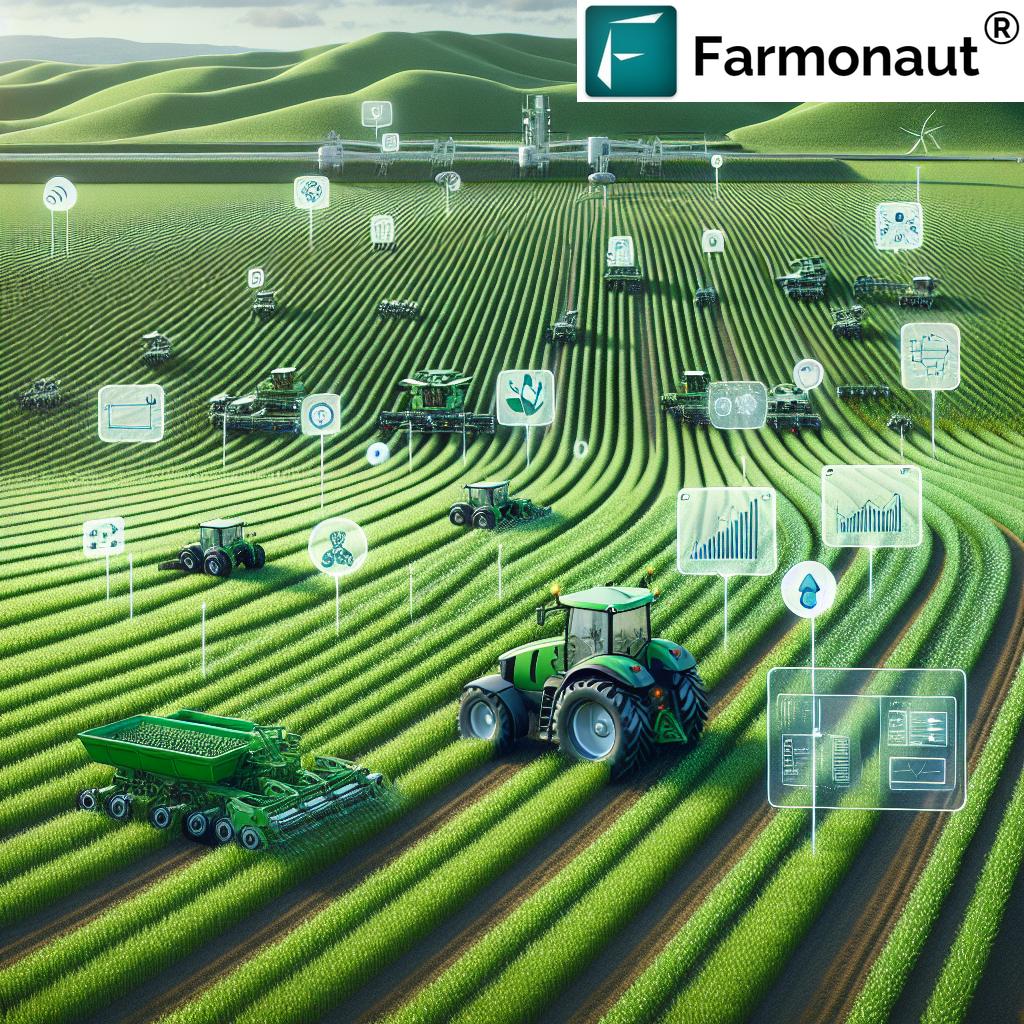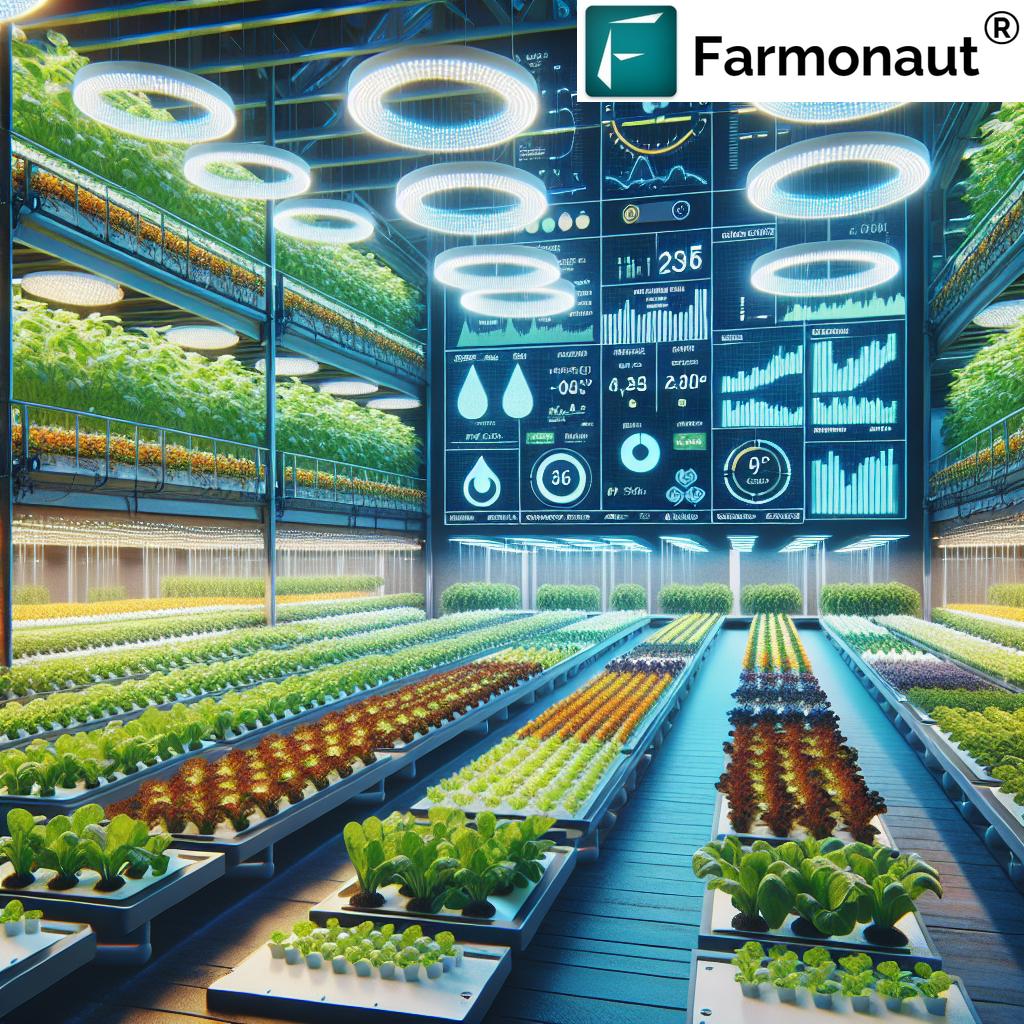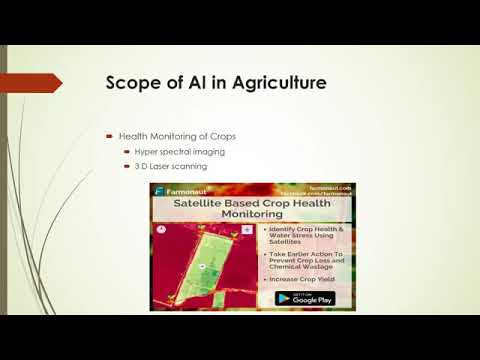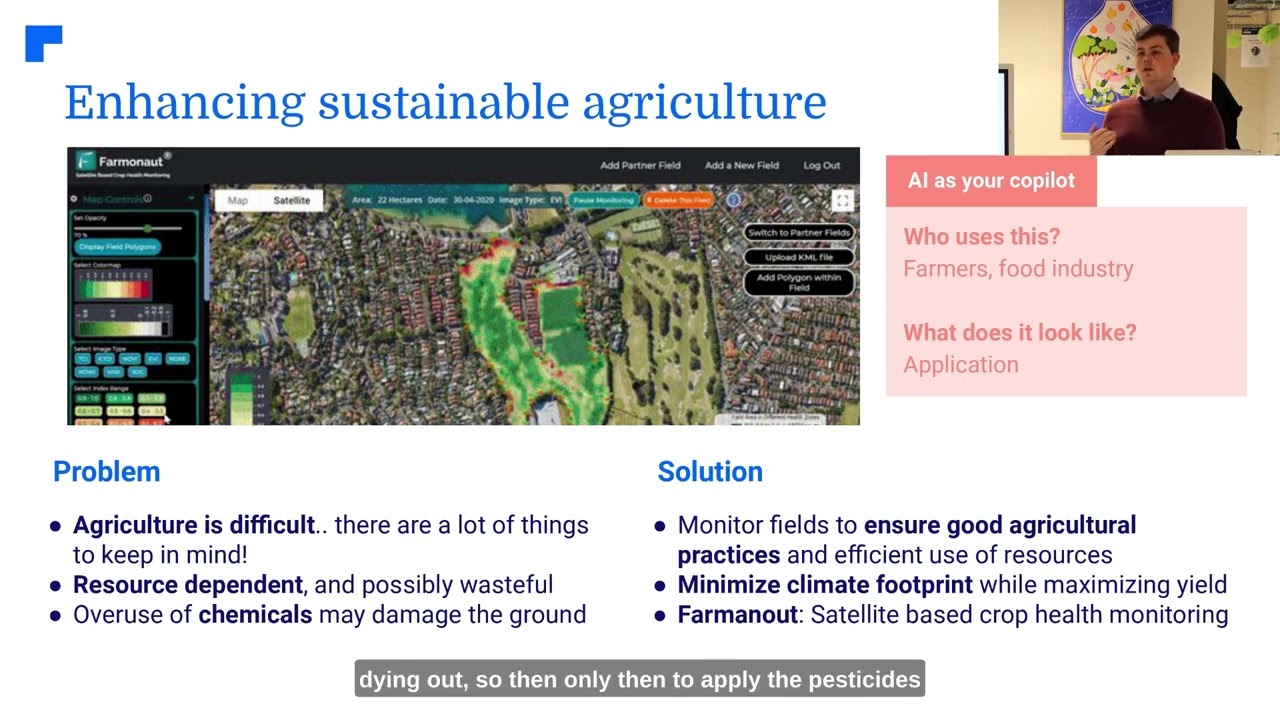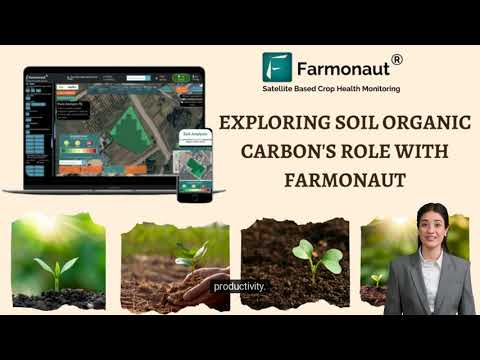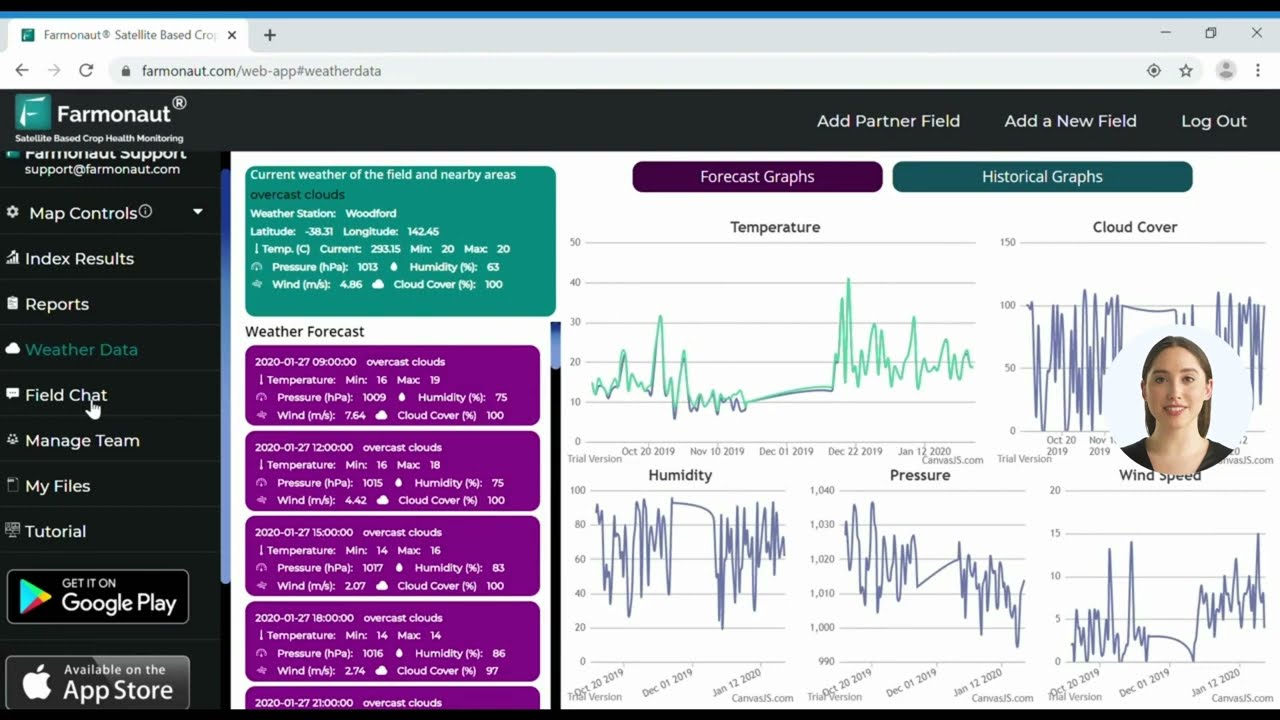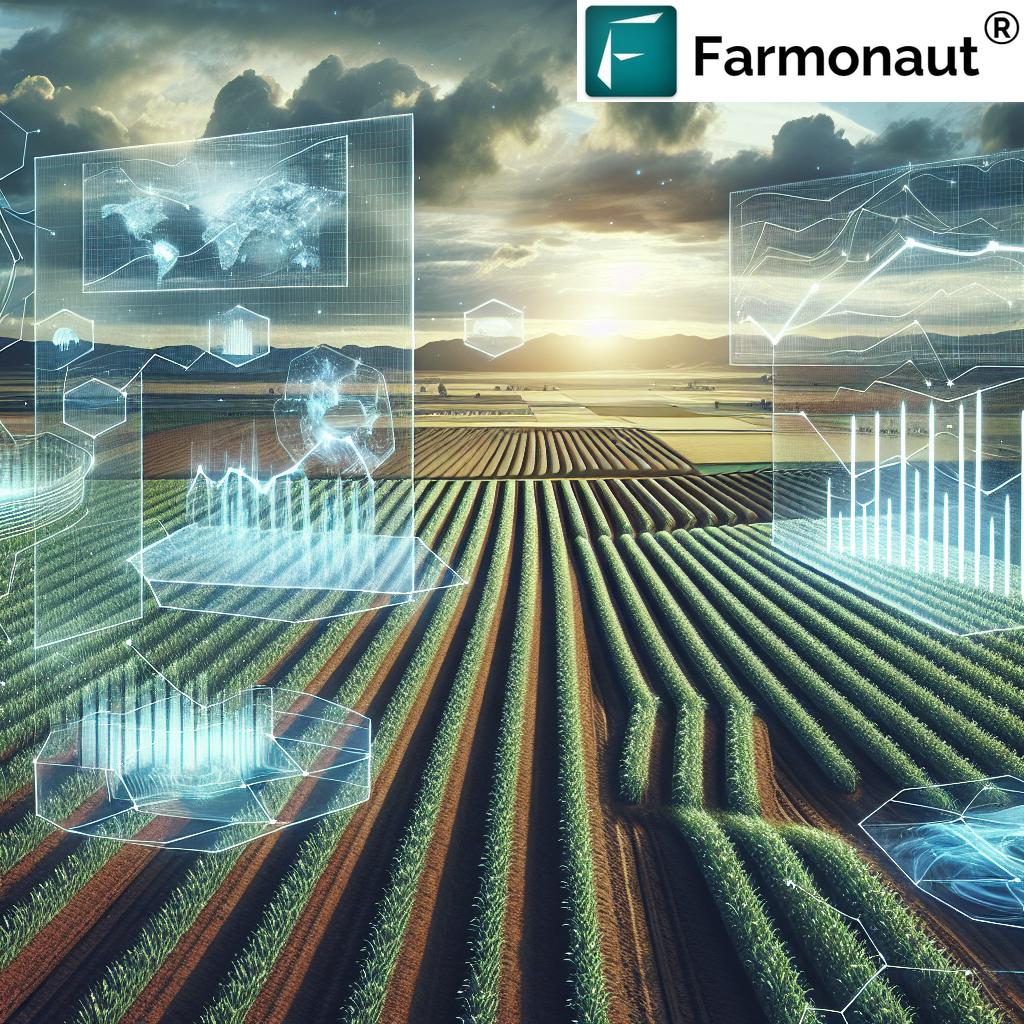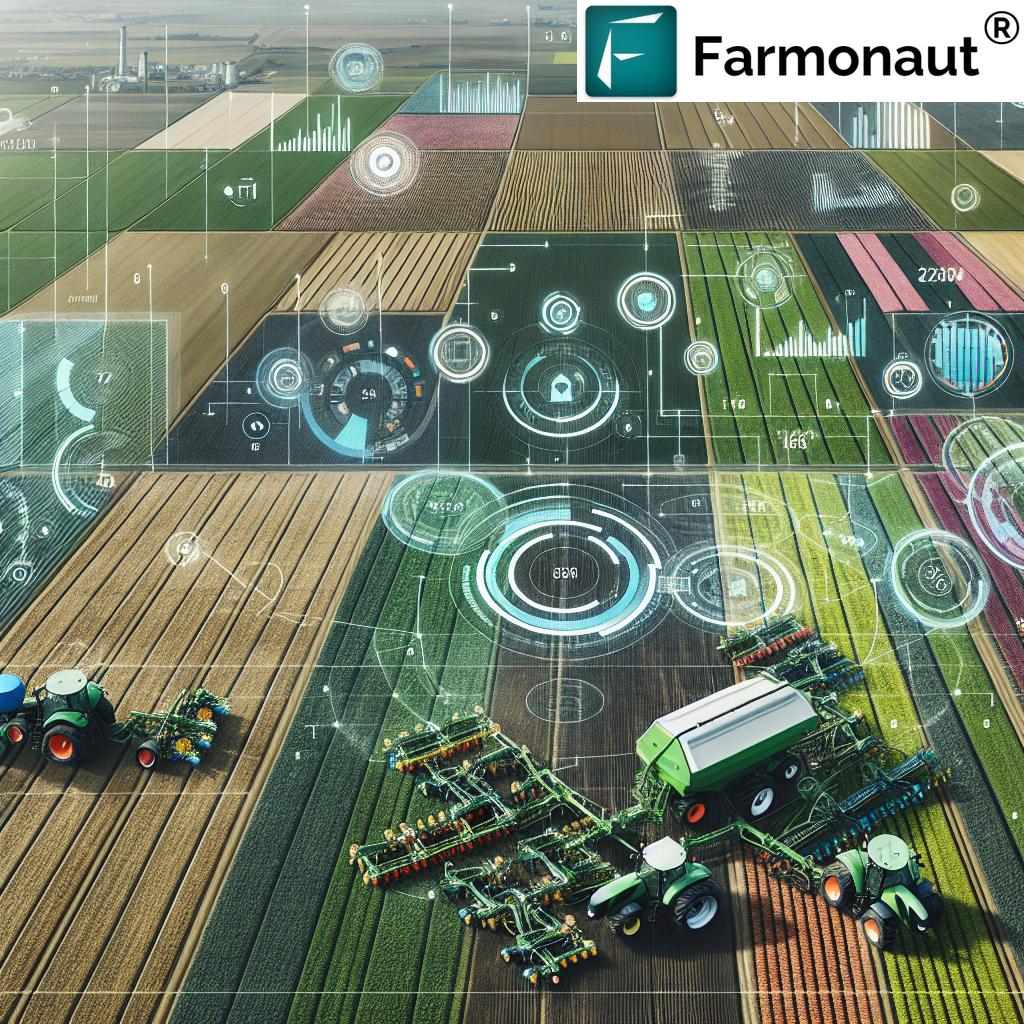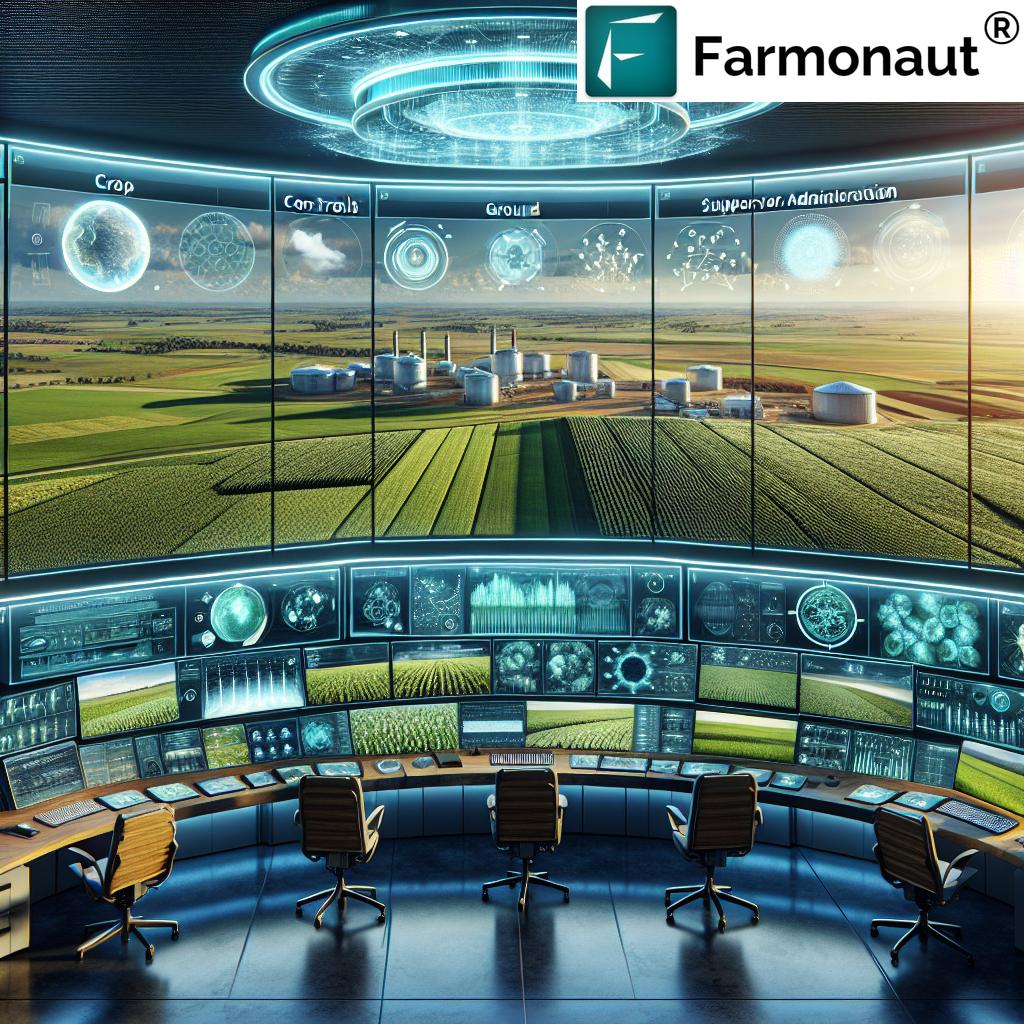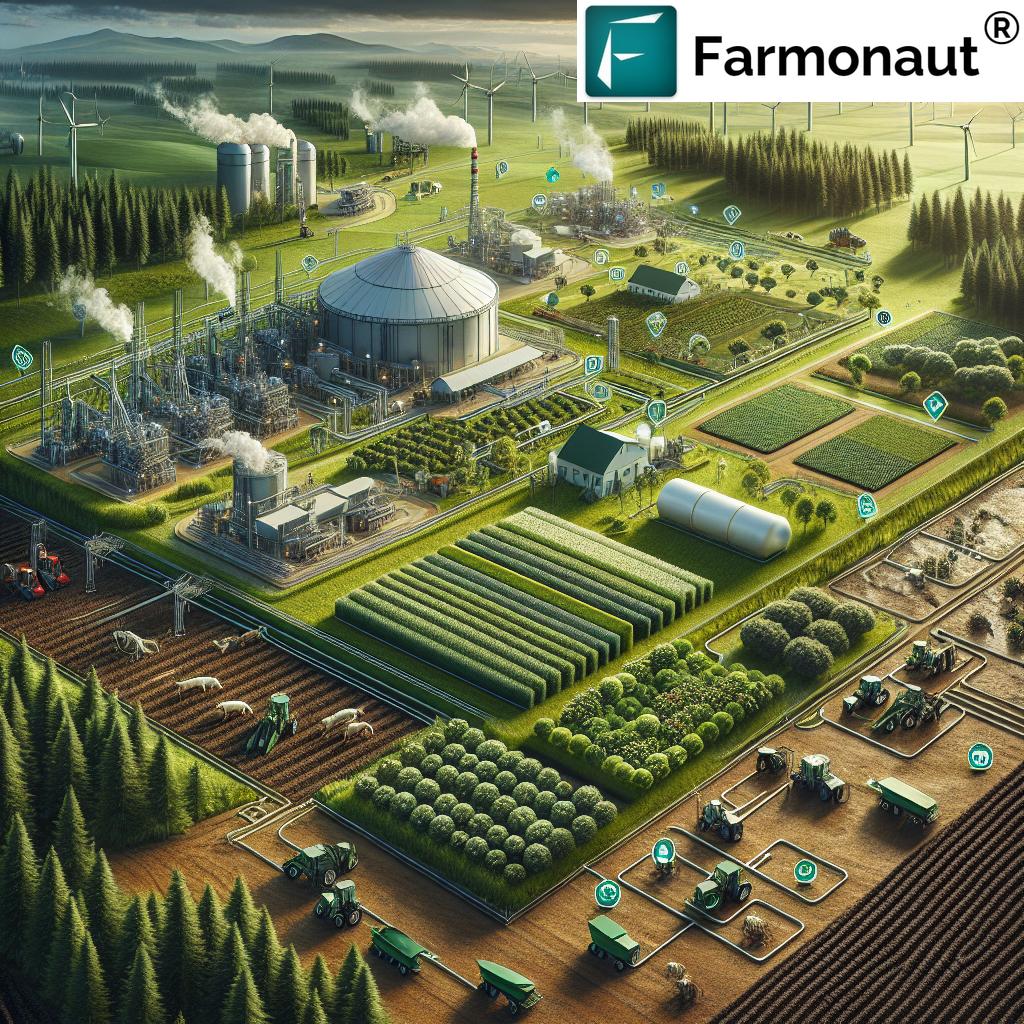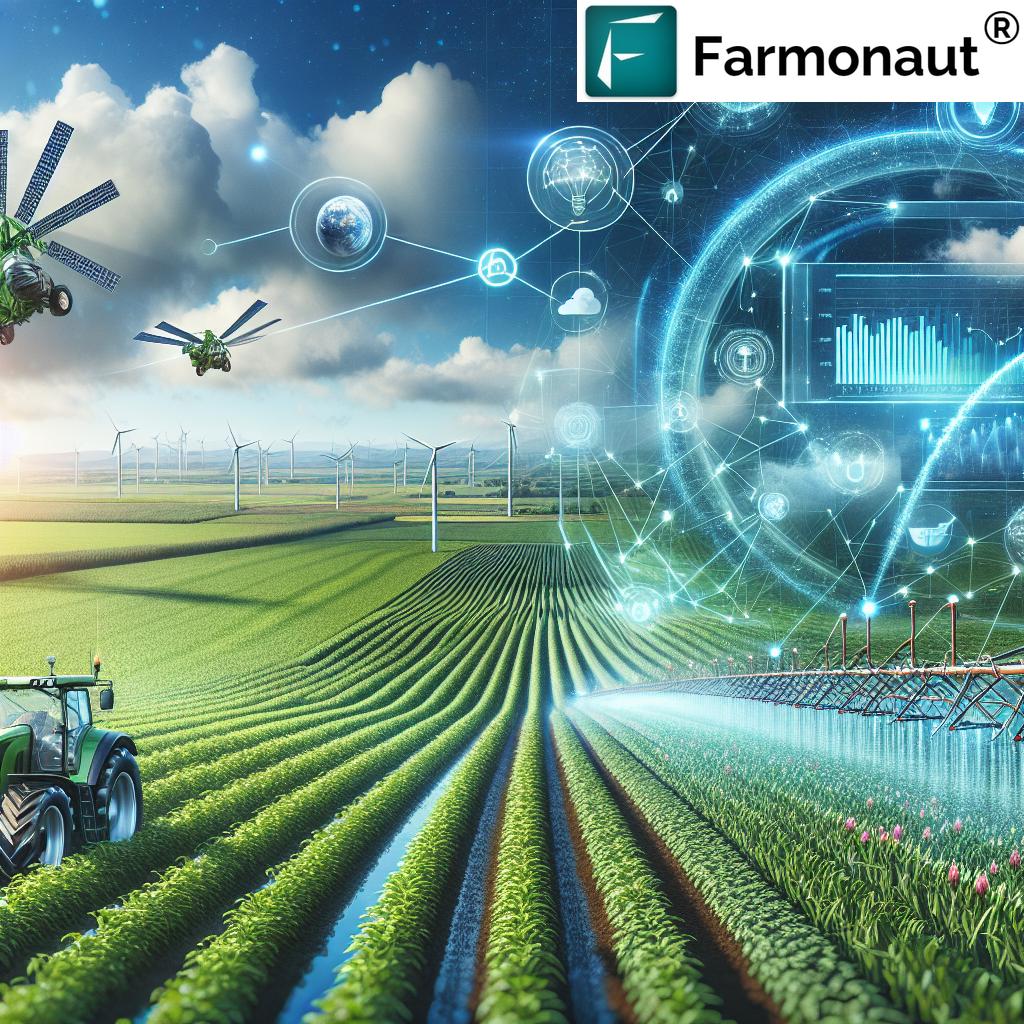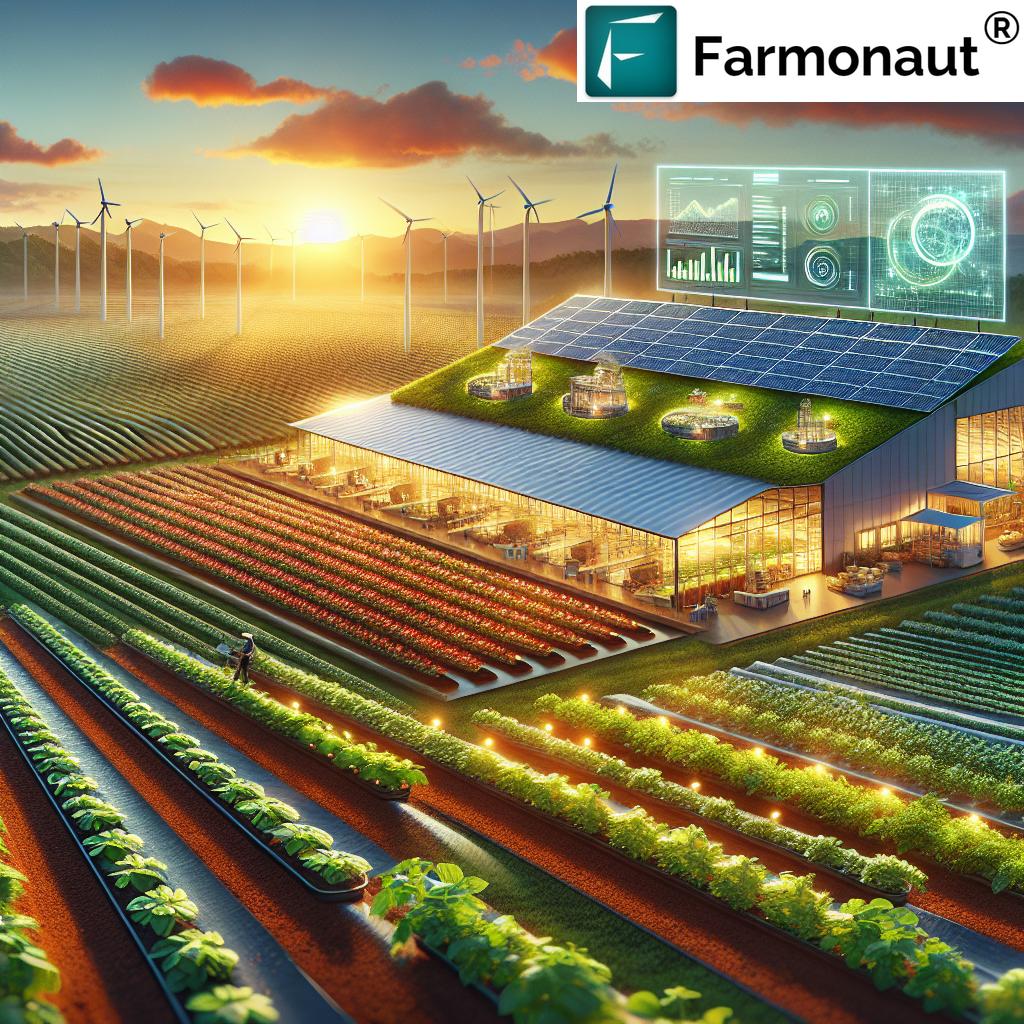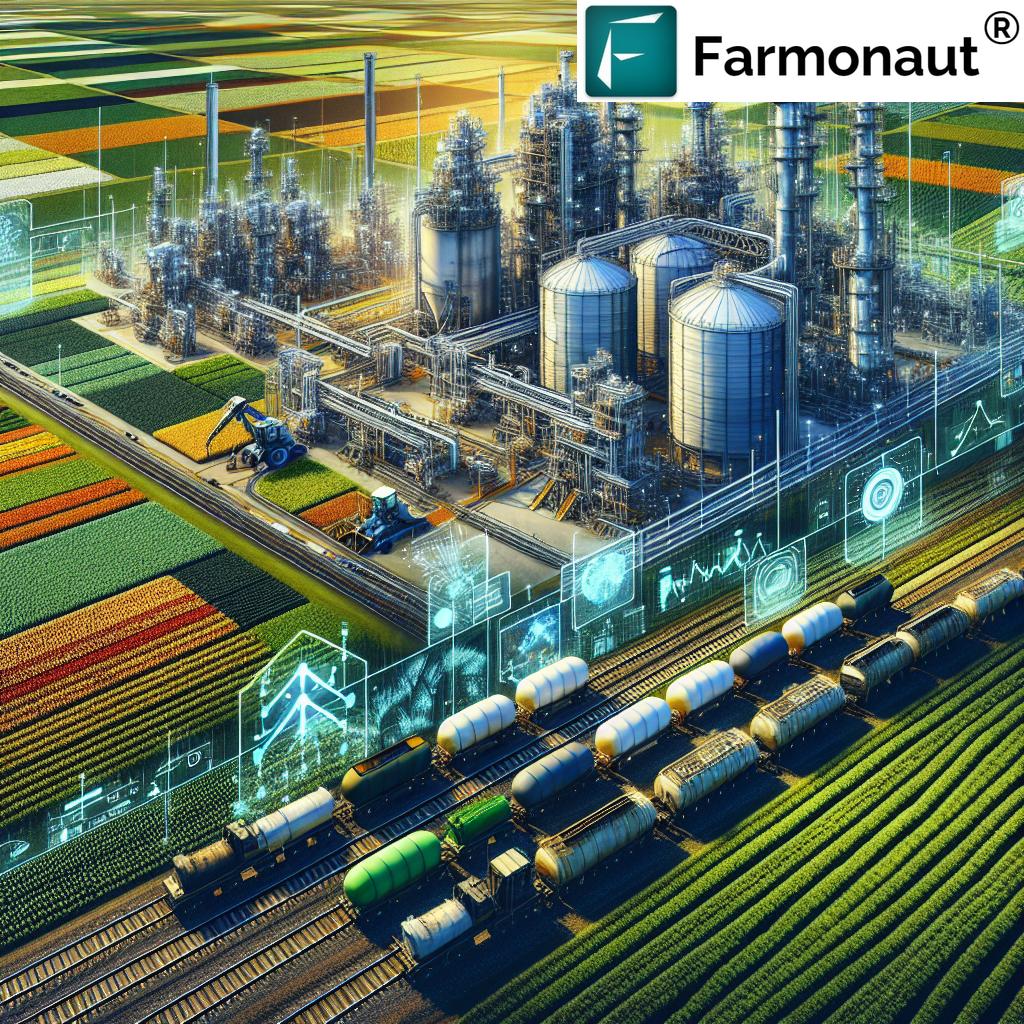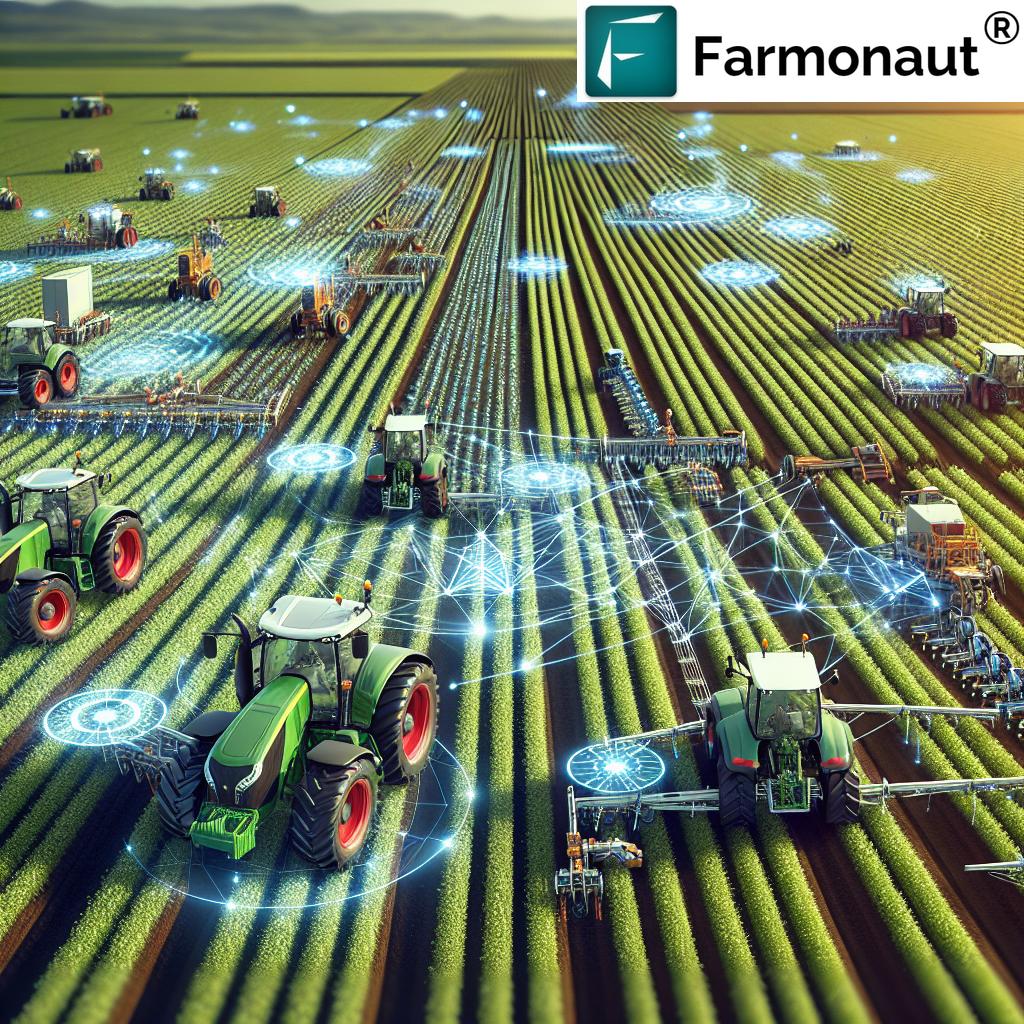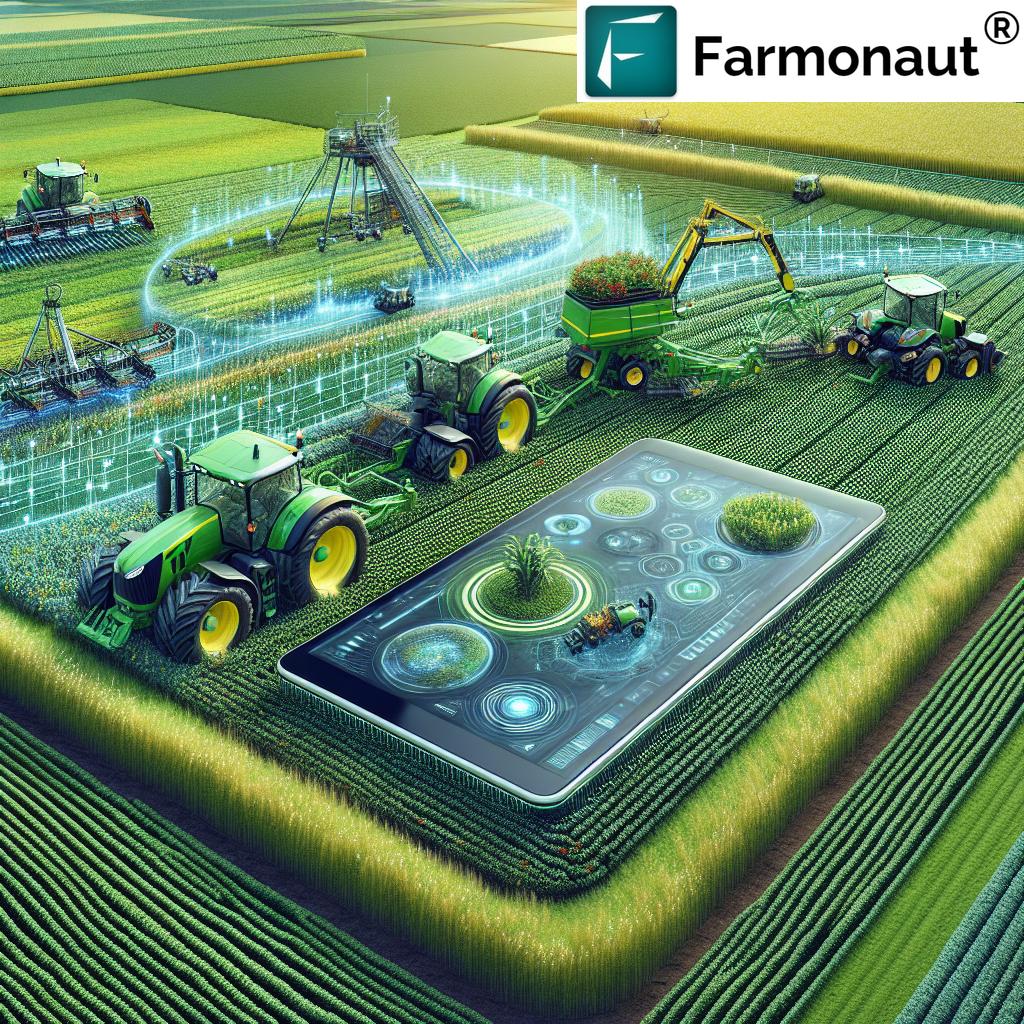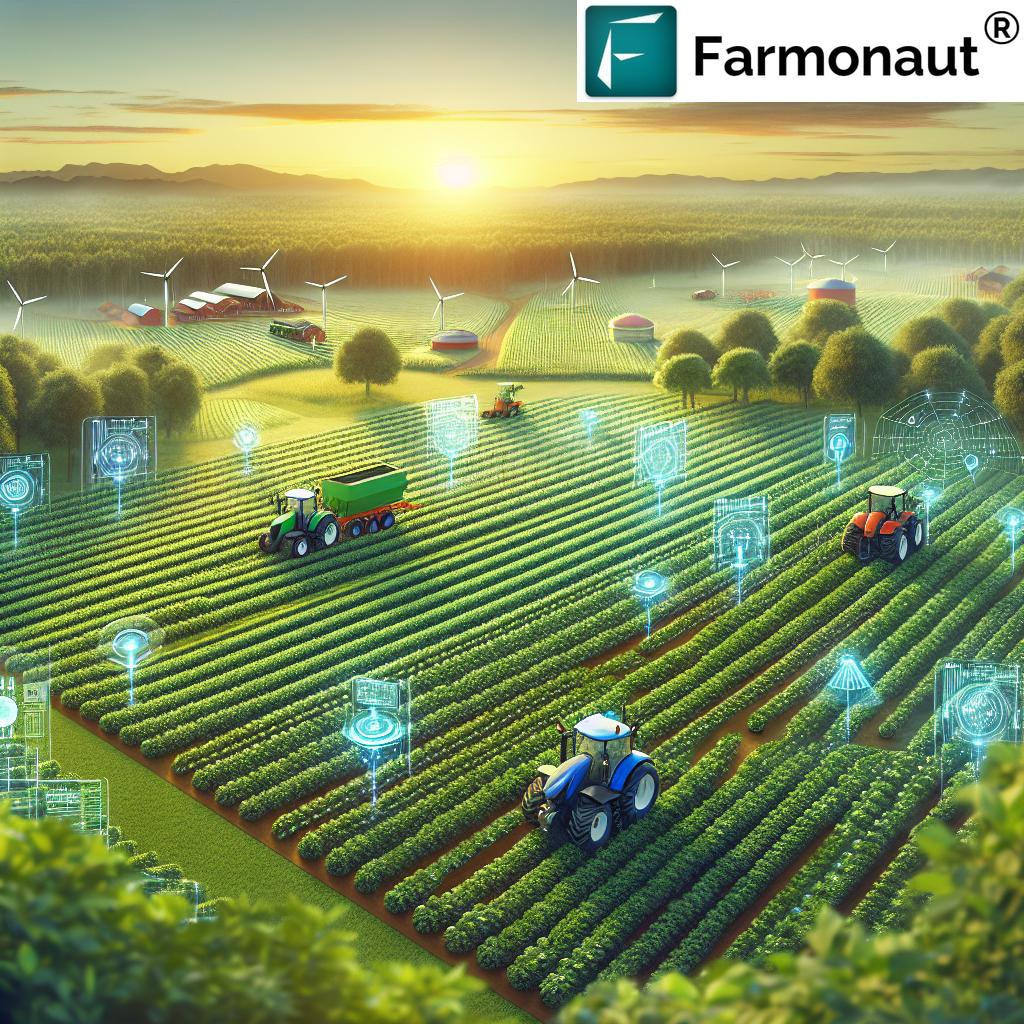7 Smart Farming Technologies That Dramatically Boost Crop Yields
Smart farming and precision agriculture are reshaping the future of food production by integrating advanced technologies—such as AI, IoT, and robotics—into agricultural operations. As we collectively face the challenges of increased food demand and environmental sustainability, these innovations empower farmers, agribusinesses, and governments to optimize resources, improve crop yields, and reduce overall costs.
Table of Contents:
- Introduction
- Why Smart Farming Matters
- 7 Smart Farming Technologies To Boost Crop Yields
- 1. Internet of Things (IoT) in Agriculture
- 2. Artificial Intelligence (AI) & Machine Learning (ML) in Farming
- 3. Automation & Robotics
- 4. Drones and Unmanned Aerial Vehicles (UAVs)
- 5. Big Data & Analytics
- 6. Blockchain Technology
- 7. Indoor and Vertical Farming Solutions
- Comparative Features and Impact Table
- Practical Applications of Smart Farming
- Benefits and Impact
- Challenges and Considerations
- Farmonaut’s Smart Farming Technologies & Solutions
- Frequently Asked Questions (FAQ)
- Conclusion & The Future of Smart Farming
Introduction: Smart Farming & Precision Agriculture
Within the rapidly evolving landscape of agriculture, smart farming—also known as precision agriculture—has emerged as a revolutionary approach to food production. By integrating cutting-edge technologies like the Internet of Things (IoT), artificial intelligence (AI), robotics, drones, big data, and blockchain, we can now make more informed decisions, streamline operations, and optimize outcomes on farms ranging from smallholdings to vast agribusinesses.
Through targeted data collection, advanced data analytics, and automated actions, these smart farming technologies are addressing centuries-old agronomic challenges—such as unpredictable weather, pest control, and resource conservation—in new and sustainable ways.
Why Smart Farming Technologies Matter
With a global population expected to surpass 9 billion by 2050, meeting the increasing food demand in a sustainable manner is more critical than ever. Traditional farming practices often lead to wasted resources, low efficiency, and environmental degradation. In contrast, smart farming leverages real-time data, sensors, and automation to minimize waste, lower input costs, improve crop yields, and support long-term sustainability.
- Efficiency: Automated machinery, robotics, and AI-driven systems streamline planting, weeding, and harvesting, allowing farms to operate with greater precision.
- Resource Optimization: Data from sensors and advanced analytics support targeted application of water, fertilizers, and pesticides, reducing overuse and environmental harm.
- Crop Health Monitoring: Smart monitoring detects diseases, pest infestations, and nutrient deficiencies, leading to timely interventions and improved yields.
- Sustainability: Technologies like blockchain and carbon footprinting enhance supply chain transparency and environmental compliance.
Now, let’s dive into the seven most impactful smart farming technologies and see how each dramatically elevates the productivity and efficiency of modern agriculture.
7 Smart Farming Technologies That Dramatically Boost Crop Yields
1. Internet of Things (IoT) in Agriculture
The Internet of Things (IoT) is foundational to smart farming. By connecting sensors, devices, and actuators throughout our fields, we gather continuous, real-time data on variables like soil moisture, temperature, humidity, and crop health. This information, often accessible from a mobile app or dashboard, enables farmers to monitor and optimize conditions instantly.
- Key Uses: Soil moisture sensing, weather monitoring, automated irrigation systems, crop health surveillance, livestock movement, equipment status
- Device Examples: Soil and climate sensors, smart loggers, actuators for irrigation and nutrient supply, network-connected cameras
IoT-based crop monitoring systems empower us with granular visibility, so we only irrigate or fertilize when and where it’s needed, optimizing inputs and dramatically boosting resource efficiency.
Benefits:
- Water saving: IoT irrigation systems prevent overwatering and drought stress
- Labor reduction: Automated alerts and controls minimize manual inspections
- Yield increase: Continual in-field monitoring enhances plant health, directly raising crop yields
Learn more about affordable, satellite-based IoT in agriculture solutions with Farmonaut‘s app.
2. Artificial Intelligence (AI) & Machine Learning (ML) in Farming
Artificial Intelligence (AI) and Machine Learning (ML) are central to modern smart farming technologies. These systems process large agricultural datasets—from sensors, satellite images, and IoT devices—to detect patterns, predict outcomes, and generate prescriptive advice.
- AI in farming supports predictive analytics for weather forecasting, pest and disease outbreak prediction, and optimal crop management decisions.
- ML algorithms rapidly analyze images for early signs of stress, nutrient deficiency, or disease.
One such innovation is Farmonaut’s Jeevn AI Advisory System. This tool delivers real-time insights, personalized recommendations, and weather forecasts, leveraging satellite data and historical patterns to guide farmers on interventions ranging from fertilization to harvesting windows.
Example Benefits:
- Early disease and pest detection reduces crop losses
- Data-driven input optimization cuts costs
- Predictive analytics guide timely interventions for maximum yield
Explore Farmonaut’s AI-Driven Crop Advisory—a path to actionable advice and increased farm productivity.
3. Automation & Robotics in Precision Agriculture
Automated systems and robotics are essential drivers of precision agriculture. From autonomous tractors and robotic weeders to high-precision harvesters, these machines carry out repetitive tasks with unerring efficiency.
- Planting & Weeding: Robotic planters and weeders identify rows and management zones for vegetables, grains, and fruits, ensuring even spacing and minimal crop damage.
- Harvesting: Robotic harvesters use cameras and AI to distinguish ripe produce and pick it without bruising or damaging crops—a breakthrough for labor-intensive crops like strawberries, tomatoes, and lettuce.
- Operating Systems: Automated guidance systems use GPS and computer vision for straight planting, on-time weeding, and efficient harvesting in all weather.
Key Advantages:
- Reduces labor requirements and related costs
- Improves operational efficiency and uniformity
- Promotes sustainable farming practices by reducing chemical usage and resource waste
Discover how Fleet Management Tools for autonomous farm equipment can further boost operational efficiency and cost savings.
4. Drones and Unmanned Aerial Vehicles (UAVs) for Crop Health
Equipped with high-resolution cameras and multispectral sensors, drones and UAVs provide rapid, large-scale aerial monitoring of crops. They are increasingly deployed to inspect:
- Crop health and vigor
- Soil variability and drainage
- Pest infestations and disease outbreaks
By capturing panoramic, real-time imagery, drones facilitate targeted pesticide and fertilizer applications, identify areas of stress, and help us respond quickly to potential threats. The outcome is precise intervention, reducing waste and ensuring resource conservation.
Benefits:
- Reduces both costs and environmental footprint by limiting over-application
- Increases yields by enabling fast reaction to emerging issues
- Improves crop monitoring in hard-to-reach and large-scale farms
See how drones and UAVs can be paired with remote satellite monitoring for maximum coverage. Explore plantation and large-scale management tools.
5. Big Data & Analytics in Smart Farming
The modern agricultural industry is data-rich, with sensors, drones, satellites, machinery, and weather feeds generating terabytes of information. Harnessing this big data through advanced analytics allows for:
- Trend analysis on crop performance
- Early identification of growing problems (pest, disease, soil degradation)
- Yield prediction using predictive modelling
- Optimization of inputs and resources for every square meter of land
Analytics platforms like Farmonaut consolidate datasets from satellites, weather reports, and in-field devices—delivering visual dashboards and actionable insights on everything from irrigation schedules to carbon footprint.
Further reading: Farmonaut Carbon Footprinting Tools—monitor and reduce environmental impact with robust, real-time analytics.
6. Blockchain Technology for Agriculture Traceability
Blockchain is revolutionizing the agricultural supply chain by ensuring product traceability, transparency, and security from farm to consumer. Each transaction or process step—whether it’s harvest, transport, or sale—is recorded immutably on a decentralized ledger. This enables:
- Genuine verification of food origin, quality, and safety
- Rapid tracing in case of safety recalls or authenticity issues
- Enhancement of consumer trust in sustainably grown and organic goods
- Protection against fraud in global supply chains
Farmonaut’s blockchain-based traceability solution brings transparency to food, textile, and related supply chains, supporting both corporate clients and farmers.
7. Indoor and Vertical Farming Solutions
When outdoor conditions become unpredictable or unsuited for year-round production, indoor farming and vertical farming offer controlled, resource-efficient environments for numerous crops. Using IoT, AI, and automated systems, these setups regulate light, temperature, humidity, and nutrient delivery with unmatched precision.
- Hydroponics: Growing crops in water-rich nutrient solutions rather than soil, with closed-loop water recycling to minimize waste
- LED Lighting & Climate Control: On-demand customization for every plant growth stage
- AI & IoT Integration: Automated monitoring and intervention for tight control of resource use and disease containment
Benefits:
- Sustained, high-volume production—regardless of external weather
- Minimal pesticide and herbicide usage
- Reduced land, water, and transport needs
For expert crop management advice, including vertical farming, see Farmonaut’s Crop Plantation & Forest Advisory.
API Integration: Want to build your own smart farming application? Use our Satellite & Weather API. Developers can find documentation here.
Comparative Features and Impact Table: 7 Smart Farming Technologies
| Technology Name | Key Functionality | Main Technology Used | Est. Yield Increase (%) | Est. Cost Savings (%) | Sustainability Impact | Typical Application |
|---|---|---|---|---|---|---|
| Internet of Things (IoT) | Real-time crop and resource monitoring | IoT, Sensors, Cloud Networking | 15-20 | 20-30 | Reduces input & water waste, supports smart irrigation | All field crops, greenhouses |
| AI & Machine Learning | Predictive analytics, disease & pest detection | AI, ML, Satellite Imaging | 20-30 | 25-35 | Improves input precision, reduces chemical risk | Row crops, specialty/horticultural crops |
| Automation & Robotics | Autonomous planting, weeding, harvesting | Robotics, Automation, GPS | 18-25 | 30-40 | Reduces labor, fuel & chemical use | Cereals, vegetables, orchards |
| Drones & UAVs | Aerial imaging, site-specific interventions | Unmanned Vehicles, Cameras, IoT | 10-18 | 15-20 | Targets pesticide/fertilizer use, improves mapping | Fruits, grains, large fields |
| Big Data & Analytics | Aggregation & analysis of all farm datasets | Data Science, AI, Cloud Analytics | 12-17 | 10-25 | Improves resource use, enables sustainability audits | All crops, mixed operations |
| Blockchain | Supply chain traceability, transparency | Blockchain, Secure ledgers | 5-8 | 5-10 | Minimizes fraud, ensures eco-label compliance | Export crops, organic foods, textiles |
| Indoor & Vertical Farming | Controlled-environment crop production | IoT, Automation, Climate Control | 22-35 | 25-38 | Saves water/land, limits crop loss by weather | Leafy greens, herbs, urban farms |
Practical Applications of Smart Farming Technologies
How do the innovations listed above translate to improved outcomes on the farm? Here are the most impactful use cases enabled by smart, connected agricultural systems:
- Precision Agriculture: Site-specific application of water, fertilizer, and pesticide using sensor and satellite data; reduces waste and increases yields
- Crop Health Monitoring: Remote sensing and AI-driven crop monitoring systems detect stress, diseases, or emerging pest problems in real-time
- Automated Irrigation Solutions: IoT-based systems analyze soil, weather, and crop needs to optimize irrigation for water conservation and plant health
- Livestock Monitoring: Wearable sensors and GPS collars track animal location, health, and activity—enabling gene management and welfare audits
- Supply Chain & Food Traceability: Blockchain records every step from farm to consumer, ensuring authenticity and transparency (Farmonaut Traceability Tools)
Whether growing grains in China, vegetables in urban indoor farms, or managing a mixed operation in the U.S., we can see these technologies driving sustainable profit and resilience.
Benefits and Impact: Why Adopt Smart Farming?
- Higher Yields: Early and accurate interventions ensure healthy crops and reduce losses to diseases and pests
- Resource Efficiency: Targeted application of inputs (water, fertilizer, pesticides) lowers overall costs while maximizing output
- Cost Reduction: Automation reduces labor costs by up to 40%; predictive analytics minimize input waste
- Sustainability: Smart farming practices decrease carbon emissions, enhance soil health, and lower the risk of environmental degradation (Farmonaut Carbon Footprinting)
- Supply Chain Transparency: Enhanced by blockchain for food safety and consumer trust
- Risk Reduction: Real-time weather forecasting and remote monitoring protect against climate-driven crop failures
Ultimately, the integration of smart farming technologies leads to profitable, resilient, and ecologically responsible food production worldwide.
Challenges and Considerations in Adopting Smart Farming
Despite the promise of transformative technologies, several barriers may limit widespread adoption in certain regions:
- Initial Investment: Advanced tools and equipment can carry significant upfront costs, particularly for small-scale farmers.
- Connectivity: Reliable internet and data infrastructure are often lacking in rural or underserved areas.
- Data Management: Siloed or unstructured data sets require sophisticated analytics platforms and skilled interpretation (Centralized Management Platforms help address this).
- Skill & Training: Successful use of these technologies demands farmer education and ongoing support.
- Ongoing Maintenance: Proper operations of robotic and connected systems require regular calibrations and updates.
Any smart farming strategy must include capacity building and ensure that all stakeholders—from growers to agronomists—feel empowered and equipped with the latest knowledge.
Farmonaut: Advanced Smart Farming Technologies Made Accessible
Farmonaut stands at the forefront of the agricultural technology revolution, striving to make precision agriculture affordable and accessible globally. By integrating satellite imagery, AI-powered advisory, blockchain, and machine learning, Farmonaut empowers both small and large farms to make evidence-based decisions and maximize their productivity and sustainability.
- Satellite-Based Crop Health Monitoring: Real-time, multispectral data on vegetation health and soil moisture, easily accessible via mobile or web app—start monitoring your fields
- AI-Powered Farm Advisory (Jeevn AI): Personalized recommendations on weather, crop management, and timely interventions for increased yield and efficiency.
- Blockchain-Based Traceability: From field to shelf, ensure food safety, authenticity, and transparency using secure blockchain systems
- Fleet and Resource Management: Optimize operational efficiency and equipment usage with real-time tracking and analytics—learn more here
- Carbon Footprint Monitoring: Track, report, and reduce the environmental impact of your farming practices using Farmonaut’s tools
Available through subscription-based models, Farmonaut delivers flexibility for farmers, agribusinesses, and government users—see accessible pricing below:
Get started with Farmonaut’s affordable smart farming platform and join thousands of innovative growers committed to future-ready agriculture.
FAQ: Smart Farming Technologies
- What is smart farming?
Smart farming is the use of advanced technology (AI, IoT, robotics, data analytics, blockchain) within agriculture to increase crop yields, optimize resources like water and fertilizer, and boost sustainability. - How does AI help in farming?
AI analyzes massive datasets to predict pest outbreaks, recommend timely interventions, and provide weather forecasts, supporting better and faster decisions. - Can small farms access smart farming technologies?
Yes, cloud-based platforms and satellite-enabled crop monitoring from providers like Farmonaut make precision agriculture tools affordable and accessible even for smallholders. - Are indoor and vertical farms sustainable?
Absolutely—these setups save water, limit land use, and enable year-round production. They’re powered by IoT, climate control, and automation for maximum efficiency. - How can blockchain help with food safety?
Blockchain builds an unchangeable record of every stage in the agricultural supply chain, so consumers and businesses can trace food origins and confirm standards. - What are the most common challenges in adopting smart farming?
Initial investment costs, connectivity limitations, and the need for specialized training remain key hurdles. However, these barriers are reducing as technology becomes widespread.
Conclusion: The Promising Future of Smart Farming
As we confront a world of climate variability, resource limitations, and increasing population pressures, smart farming technologies present the best path forward for global food security and environmental resilience. With innovative tools ranging from AI-driven analysis and IoT monitoring to blockchain traceability and robotic harvesters, farmers worldwide are empowered to improve yields, cut costs, and steward the land more responsibly.
At Farmonaut, our mission is to level the playing field for all agricultural stakeholders—enabling profitable, sustainable, and data-driven food production on every continent. By adopting tomorrow’s technology today, we can optimize every decision, monitor every crop, and improve lives—one field at a time.
Ready to experience the future of farming? Download the Farmonaut app or visit our platform and start your journey toward smarter, more resilient agriculture today.


